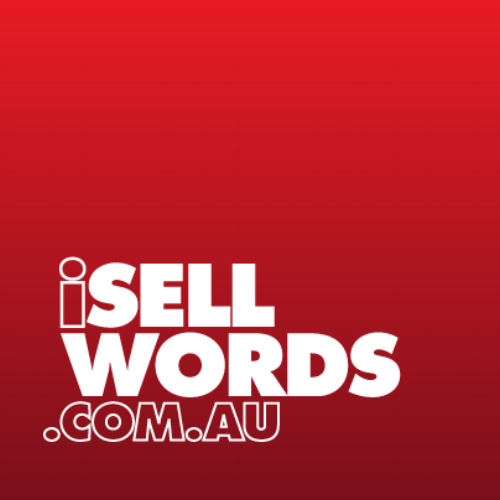In the 1990s, the internet (or just “Internet”) was referred to as the information superhighway. Many on-ramps and off-ramps taking you where you want to go from point A to point B. After the smartphone revolution in 2007, the World Wide Web resembled less a highway and more of a vending machine - content was now on demand, curated by algorithm, stopping and starting at the whim of the user.
Copywriting was once the province of “Mad Men” who wrote pithy, predictable, and gimmicky headlines.
For the most part, they were effective.
Now, headlines are boring in comparison to other forms of content. Text is competing against short videos on TikTok, pictures on Instagram, and podcasts on Spotify. Not only that, but endless streams of them, all the time.
Your business isn’t competing against other businesses, it’s competing for attention. This is the crucial distinction between doing copywriting the old way and doing it the new way in 2023.
COPYWRITING From New Media To The Norm
Let’s assume the “snappy headline” is no longer relevant since the competition is just too fierce and compelling. What must you do right away? Your content and copywriting should convey the value of your product or service in a way that is educational, insightful, and interesting.
If you can't connect with your audience, you won't be successful since they'll go on to the next exciting thing. These constant bursts of content releases dopamine chemicals into people's brains to maintain their bio-transmitter levels and hold their attention.
Former Facebook engineers have since admitted their medium was built around “continuous partial attention,” as Justin Rosenstein. inventor of the ‘like’ button, told the The Guardian.
If you can't convince potential customers to remain, you lose them. However, you need to know how to maintain consumer interest throughout the entire transaction. You must establish a compelling value proposition, a compelling story, and a reason for people to care if you want to do it well.
The curiosity Factor in copywriting
Curiosity is always the call for attention. One of the most famous examples in narrative storytelling instills a burning curiosity that leaves even five-year olds spellbound: a flickering, repeating hologram of a woman saying, “Help me Obi-Wan Kenobi, you’re my only hope.”
Who is that? Who is Obi-Wan? What kind of help? Why is he her only hope?
We are inherently and naturally highly interested as humans.
You can hold someone’s interest for a while if you tell them something intriguing and engaging without immediately providing the solution.
In the end, we want people to understand that we have something that can benefit them, and that is what we as copywriters are trying to convey to them with this interest. People need our help. Someone's time is wasted if your product or service doesn't genuinely provide something of value. They'll be irate if they spend five seconds or five hours with you if you don’t give them anything truly valuable.
The last thing you need is a disgruntled customer since they won't do business with you again. It cannot be overstated how little time you have to capture and hold someone's attention in the present environment with all of your competitors. It follows that your headline, hook, and entrance point into that person's world has to be intriguing otherwise it’s a flick of the thumb and on to something else.
Creating The Compelling Narrative
The first part is giving someone a reason to be interested in what you have to say - which is how you sell. Motivation is what drives characters in narrative fiction, and it’s what drives humans to do pretty much everything. In business, the motivation may be the profit motive. In Law and Order: SVU, the motivation might be something more sinister.
Then, comes Information. Information that a target audience can actually use. Not just “five tips” that have been recycled ad nauseam, but information that is the entry point into a grander and more compelling narrative.
Once Luke takes R2D2 to Obi-Wan, he learns that Princess Leia is seeking the old man’s help after a failed diplomatic mission to Alderaan. We enter the world of the dastardly Galactic Empire, swashbuckling Jedi, scheming bounty hunters, and an entire galaxy of creatures. Will the Rebel Alliance prevail? Every scene in Star Wars ended on an old serial style cliffhanger by design - we all couldn’t wait to see what the next scene had in store.
By sharing a little of your experience or explaining why you might be able to relate to their suffering, you are also connecting with them. And the world's top start-ups and businesses are built on the principle of relieving someone else's suffering or making a difficult task simpler.
Heeding The Call To Action
The next step is to give the customer a Call to Action. These can range from asking customers to follow your channel or to look at the free report or case study at the bottom of an email. It could ask someone to begin a risk-free trial. It may be to purchase a product or sign up for a free consultation. Giving consumers the next step in the process of becoming and keeping a client is the ultimate destination on this journey.
The more value you can provide people, the more trust they will develop in you. The more examples you can provide of the job you can really execute, the more probable it is that they will become your clients or customers.
Always conclude with a strong call to action, and be extremely precise about what you want them to do.
Like in this instance, I want you to sign up to my newsletter. The form is below!

